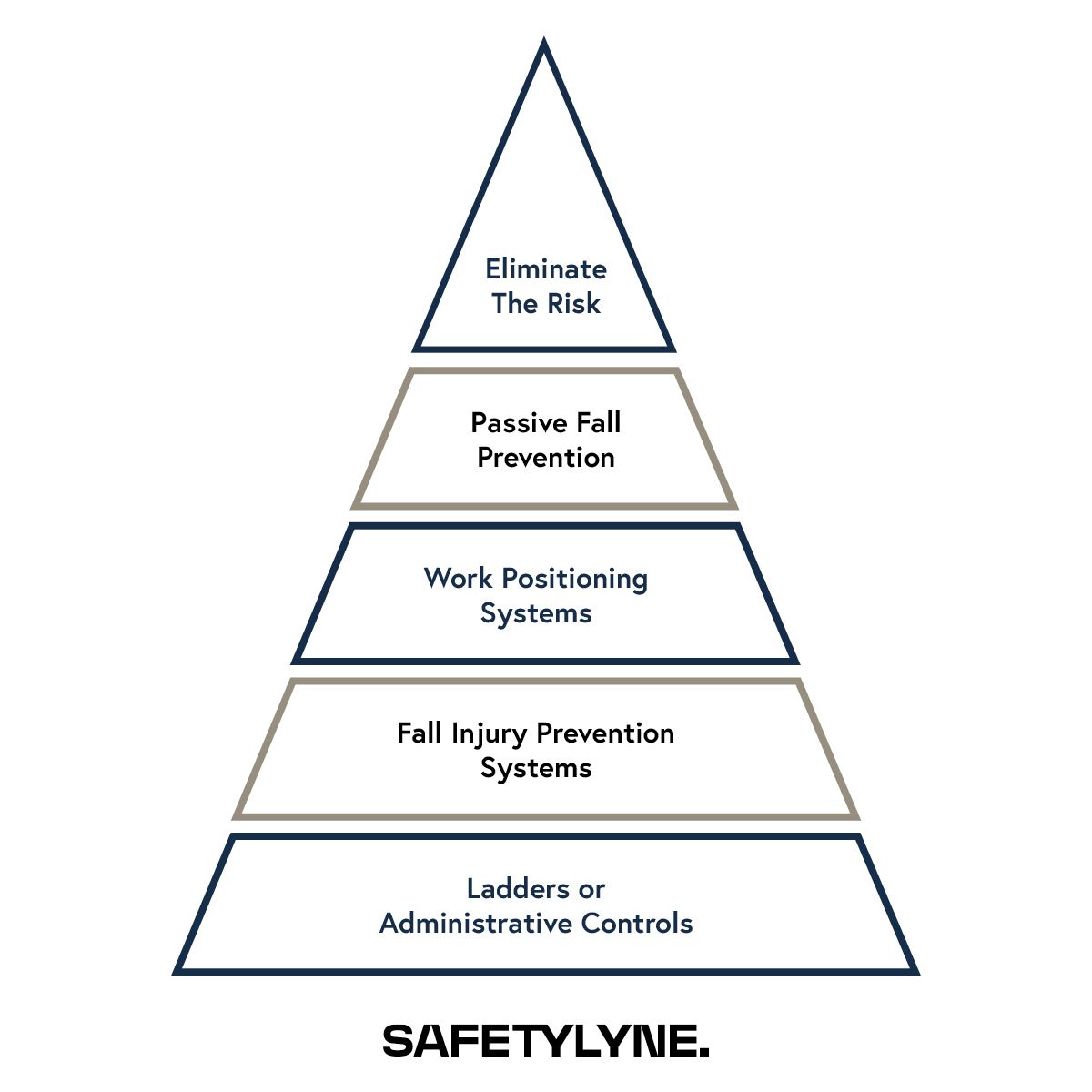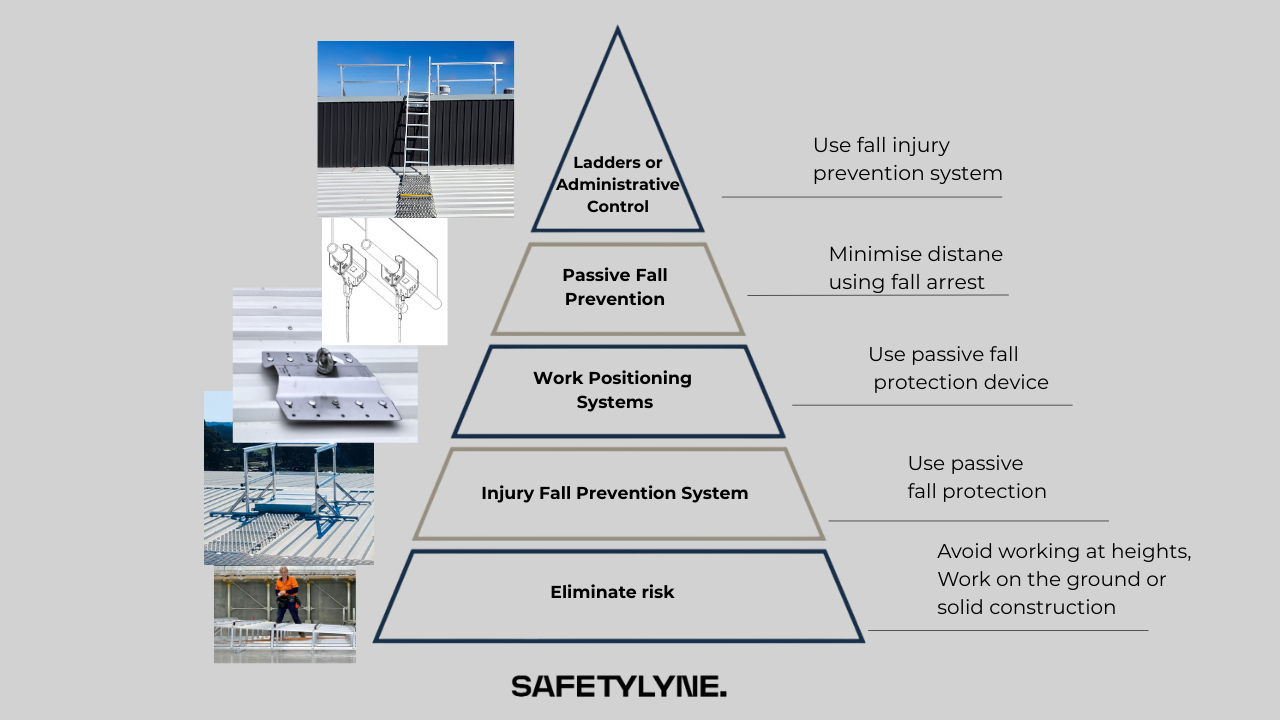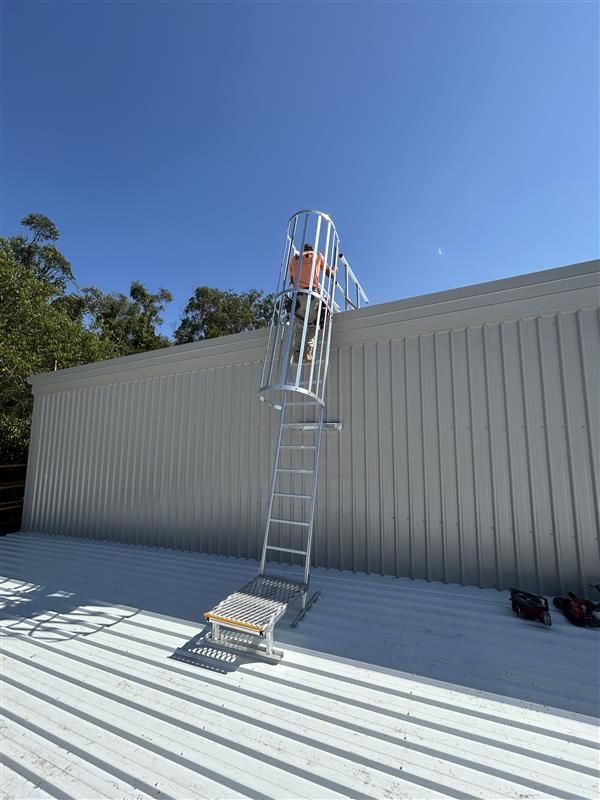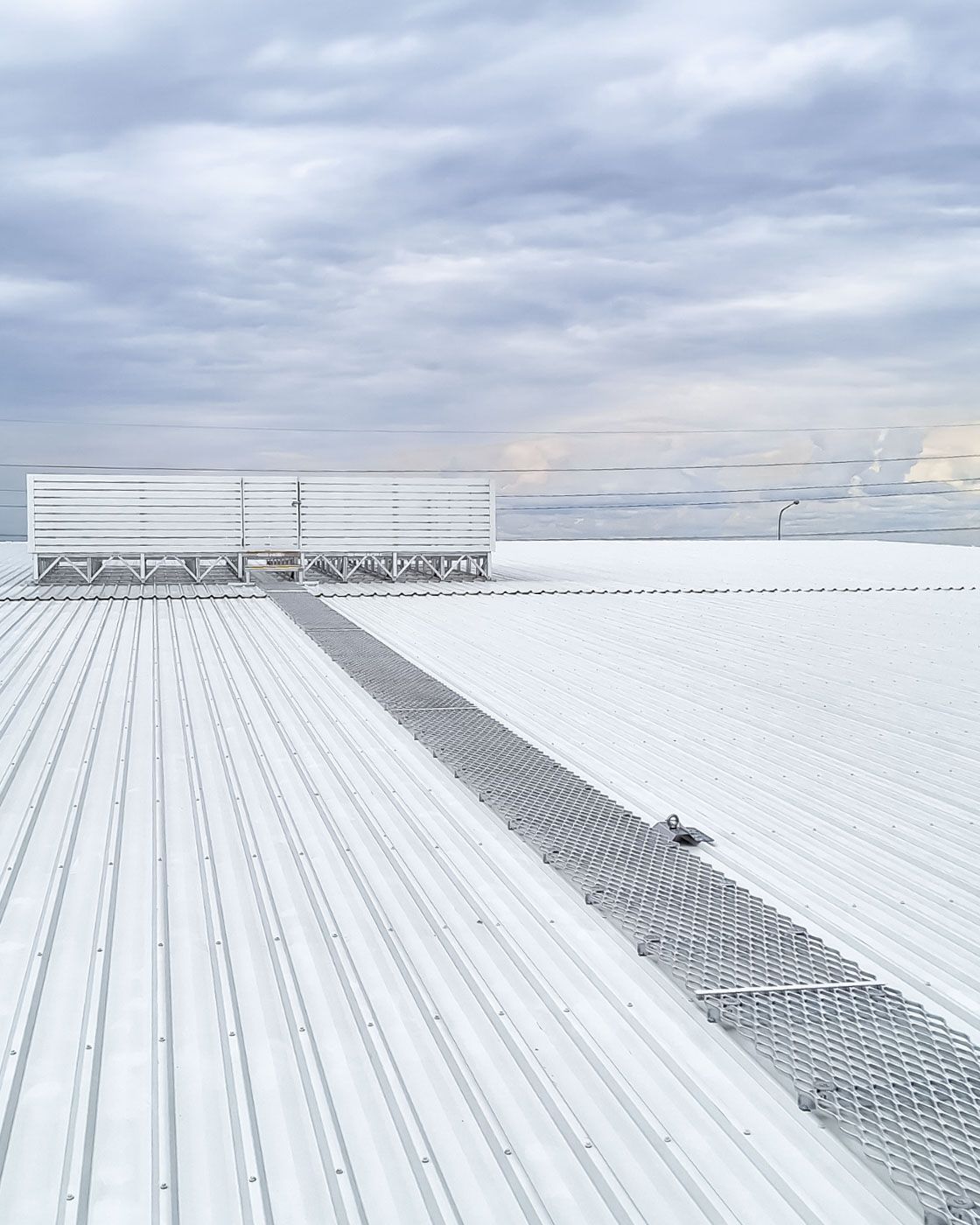Fall Prevention for Height Safety and Safe Works at Heights
It is crucial to implement a structured approach to mitigate these risks by establishing a hierarchy of control measures, as working at height has significant risks.
The hierarchy of controls is a systematic tool to manage and reduce working at heights hazards.
What is the Hierarchy of Control Measures?
The hierarchy of control measures is a 5-step system designed to minimise or eliminate risk. The levels, in order of effectiveness, are:
- Elimination - Remove the hazard entirely.
- Substitution - Replace the hazard with a safer option.
- Engineering Controls - Isolate people from the hazard.
- Administrative Controls - Change the way people work.
- Personal Protective Equipment (PPE) - Protect workers with equipment.
The Hierarchy of Control
Level 1: Undertake the work on the ground or on a solid construction.
Level 2: Undertake the work using a passive fall protection device.
Level 3: Undertake the work using a work positioning system.
Level 4: Undertake the work using a fall injury prevention system.
Level 5: Undertake the work from ladders or implement administrative controls.

Fall protection strategies should prioritise eliminating hazards at the source before resorting to PPE or administrative actions.
Level 1: Eliminate the Risk
Identify and mitigate the root causes of fall hazards to eliminate the risk of exposure. This is when site managers should reevaluate procedures, practices, locations, or equipment to eliminate potential hazards.
For instance, relocating HVAC equipment from rooftops to ground level or equipment rooms can eliminate risks associated with working at heights.
Conducting thorough site surveys and engaging height safety specialists during the design phase of new construction projects can help identify and eliminate potential fall hazards. Accessing maintenance areas via solid structures like stair towers, fixed ladders, and guardrail systems incorporated with platforms, walkways, and plant decks further minimises risk.
Level 2: Passive Fall Prevention
Passive fall prevention measures offer a higher level of safety by reducing the likelihood of errors compared to relying solely on personal protective equipment (PPE). While initial costs may be higher, passive protection solutions are often more cost-effective in the long term.
For example,
guardrails
and
void protection
installation for passive fall prevention.
Level 3: Work Positioning Systems
Work positioning systems prevent falls by restricting a worker's range of movement using PPE. These height safety systems ensure that a fall simply cannot happen, eliminating the need to mitigate free-fall distance.
Utilising fall restraint rail systems, anchor points with fall arrest lanyards, and harnesses helps to establish effective work positioning systems, improving worker safety and simplifying rescue procedures.
Level 4: Fall Prevention System
Fall Prevention systems are designed to stop a fall once it occurs, within acceptable force and clearance parameters. However, these have higher risks than work positioning systems, as they require quick intervention to prevent contact with surrounding structures or the ground.
You can also utilise fall injury systems such as catch nets, catch platforms, and individual fall arrest systems.
Providing comprehensive height safety training on the system's use is crucial to minimise risks associated with falls.
Training should cover both fall restraint and fall arrest techniques, ensuring workers are equipped to handle various fall scenarios
Level 5: Ladders or Administrative Controls
The last resort for working safely at height encompasses ladders and administrative controls.
Administrative controls involve implementing work practices or procedures to raise worker awareness of fall hazards. While they can contribute to risk reduction, administrative controls are considered the least effective method as they lack physical safeguards.
Safety monitors, warning lines, designated areas, and control lines are examples of administrative controls.
Note that administrative controls should complement, rather than replace your fall protection measures.
Compliance with WHS regulations and understanding of applicable height safety regulations are essential for effective implementation of control measures.
Implementing a Comprehensive Height Safety Strategy
Safetylyne collaborates with clients to develop custom height safety solutions, which combine elimination, substitution, engineering, and administrative controls to ensure maximum safety for your employees who work at heights.

The Safetylyne Way
Safetylyne is your trusted partner offering specialist insights on engineered access systems and custom access solutions.
Looking for a company that offers consulting services specialising in the hierarchy of control implementation? - Contact our height safety experts today for a consultation or a site audit.
Get in touch with Safetylyne, experts in height safety, today to explore tailored solutions for your height safety and maintenance access needs.
Learn more about managing the risk of falls
here.


